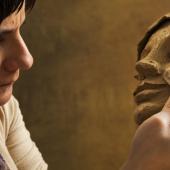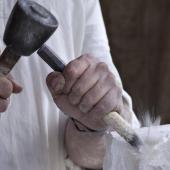Porcelain
Porcelain is extremely malleable, translucent and still shows an amazing hardness. 300 years ago, concerning porcelain one claimed that it was "white gold". Porcelain manufacturers and painters were well paid by the rich of the world for their art.
Porcelain is a product produced by burning fine ceramic. It is made based on the mixture of kaolin, feldspar and quartz. The history of porcelain goes back to the 7th century in China. Under the Sui and the Tang dynasty, porcelain was produced for the first time. That time the few producers kept the production composition and methods secret, to maintain the value of the fine material high. The adventurer Marco Polo (1254-1324) discovered porcelain on one of his long-distance travels through China and brought it back to Europe. Under the Ming dynasty (1368-1644), the porcelain was then further developed. The glazes, the decor and the painting refined itselves. Artistic porcelain painters painted designs like dragons, fishes or plants with the colour cobalt blue. Ming vases from this period are still demanded objects.
It is said that the Saxon king August the Strong (1670-1733) was so much excited of the white gold that he tried to figure out the chemical formulation of the porcelain with his scientific scholars. They actually succeeded. Subsequently, they founded the first porcelain factory in Meissen starting its production in 1710. Now everywhere in Europe one sought after kaolin in order to increase the porcelain production. Many European noble houses and cities were just about to do after Saxon king Augustus. In Europe, large porcelain factories, for example in Vienna (1718) or in London's Chelsea (1745), originated.
The porcelain then changed the courtly dining and table culture. Before the discovery of porcelain, one almost exclusively ate using gold and silver services, but now one used the new white gold. It had many advantages, because the fruit acid of sweet and fruit dishes did not affect the porcelain as opposed to gold and silver utensils. Even as diplomatic gifts the rulers presented entire dinner services, to appreciate friendly courts.
A tradition, which has survived to this day, is the eve-of-the-wedding party. That night before the wedding, the bridal couple crashes the porcelain brought by guests. This is a sign of the ability of the couple to move together through hard times and problems. The porcelain shards are to bring luck.




